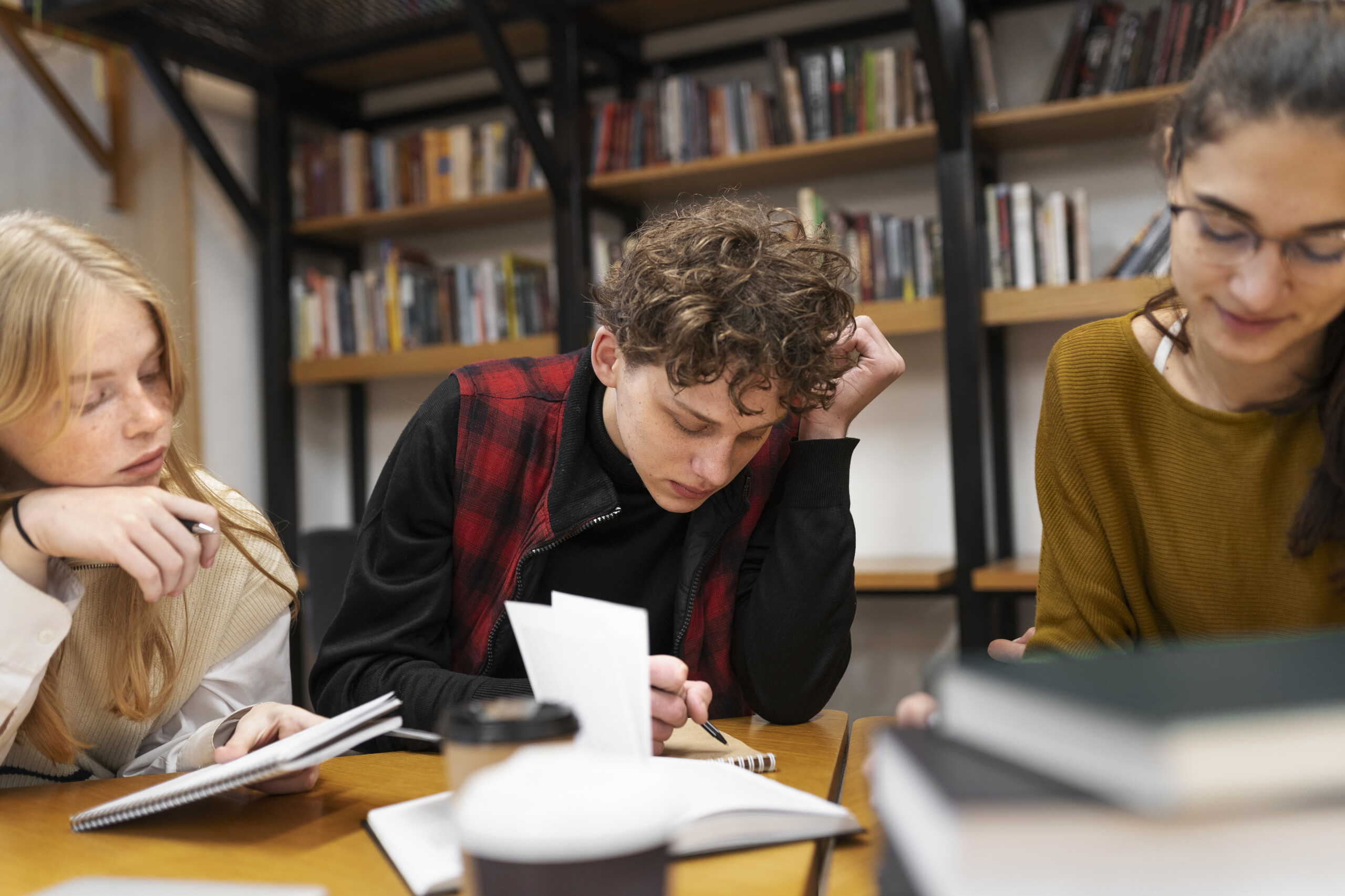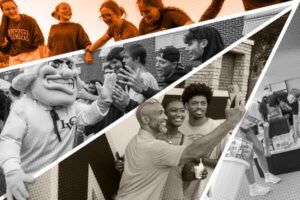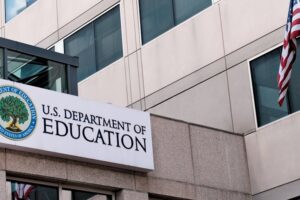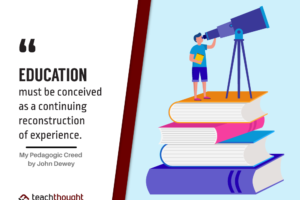
Is Plagiarism an Old-World Construct?
A few weeks ago, my wife and I welcomed colleagues from Beijing National Day School to our home in Napa. A two-hour work session was followed by a leisurely stroll through downtown and dinner at one of our favorite restaurants along the river.
I have worked with these colleagues for 18 months, focusing always on the integration of generative AI in classrooms in China and the U.S. When I ask them how the work is proceeding in China they always begin with horror stories about how often Chinese students are using AI to cheat. This should feel uncomfortably familiar to teachers everywhere.
The problem has reached such grand proportions that during the spring administration of the Gaokao (the national college entrance exam that literally shapes the future of every teenager in the country) several of the major AI companies turned off some of the functionality of their products so kids couldn’t use them to cheat.
Teachers, everywhere, always, say that students simply do not understand why plagiarism matters. Veteran educators often return to familiar arguments about ethics, integrity, individuality, and originality, all worthy principles that can sound abstract to students steeped in a different digital reality. These explanations often ignore the fact that economics underpin the arguments. Youngsters nod, sometimes politely, and then disregard the message because it means little in their world.
This generational clash clearly shows we must revise our conceptions of intellectual property (IP), creativity, and innovation and shape school policy accordingly.
A Significant Cultural Shift
American history provides a useful analogy that allows us to understand how vastly different cultural concepts can result in miscommunication and counterproductive interactions. And yes, I understand, that land concepts were tied to an entirely different economic system.
Europeans started migrating to the United States just as the concept of privately owned property was taking hold in their home countries. During westward expansion they encountered Native American tribes, most of which did not believe that land could be owned by individuals. The land was regarded as a communal resource, stewarded collectively for the benefit of the tribe.
Today’s students — who economist Kyla Scanlon dubs ‘Gen Z 2.0’ in a useful typology — often operate with a fundamentally different sense of ownership in the digital world. In their moral universe, anything posted online is communal in nature.
Why is this so? Here are a few thoughts:
- Copying and sharing online content is effortless and often encouraged.
- Memes, remixes, TikTok trends, and fanfiction normalize derivative work.
- Platforms themselves encourage derivative works and sharing (retweets, duets, remixes, reposts, sampling of music and stitching of video). They often promote and monetize this content.
- Streaming and subscription models blur the lines between “owned” and “licensed.”
- In a digital world of abundance, scarcity no longer drives value. Because of this, the traditional economic argument for IP protection weakens.
- Creation is viewed as an ongoing conversation, where attribution (i.e., “credit in a caption”) often matters more than formal permission.
Now think about how this conception conflicts with the views you espouse when you lecture students on citations and bibliographies. Does it really make sense to them considering the rules of the digital world they live in?
New Rules About Copyright and Fair Use
U.S. copyright law was amended in 2025 to include a requirement that only works created by a human being are eligible for copyright protection in the United States. The proto-lawyers in our classrooms could easily argue that any author or researcher who used AI to help generate their work produced content that is not solely created by a human being.
Fair Use legal requirements provide leeway as well. There are four factors that govern the Fair Use status of a piece of work: 1) Purpose and character of the use; 2) nature of the copyrighted work; 3) amount and substantiality; and 4) effect on the market. Ultimately, whether a work involving AI qualifies for copyright is determined individually, based on the degree and nature of human contribution to the final product.
The prospect of teachers having to weigh Fair Use factors for every suspicious assignment is daunting. Without clearer guidance, it may be inevitable.
More importantly, I worry how to communicate this complex and ambiguous set of legal restrictions to a group that simply cannot comprehend, for cultural reasons, why any tool or content they use to complete school work could be construed as anything other than a communal resource.
Moving Forward
For most of the 20th century, the public generally accepted that using someone else’s work without permission was wrong. This view was easier to sustain in an analog world, where copying was expensive, distribution was controlled, and access to works was mediated by publishers, record labels, and other gatekeepers.
We have to ask ourselves if copyright can evolve to respect creators’ rights without criminalizing the way an entire generation has been taught to create, share, and consume? If yes, educators must evolve our understanding of plagiarism to match.
Of course, any critique without a path forward is only half the work. So here’s where I think we can start: Take this link to see my draft of a school policy that tries to meld new and traditional views of intellectual policy. I include here a section (under a heading I’ve labeled as “Acceptable Use of Online and Communal Content”) that I think furthers our understanding:
Students are encouraged to:
- Remix, adapt, and build upon online content with attribution.
- Use memes, open-source media, or AI tools only when integrated with original thinking and proper crediting.
- Follow specific attribution formats provided by the teacher (MLA or APA).
There is a small group of organizations working on innovative guidelines. These policies, while varied and still rare, illustrate the possible direction of larger-scale policy:
- Peel District School Board (Ontario, Canada) has a policy that states that any IP created by students is owned by the student (or guardian); educators must obtain consent before using or publishing student work beyond regular school activities.
- Onslow College (Wellington, New Zealand) applies a Creative Commons‑BY 4.0 license to staff‑created teaching materials; it explicitly does not claim ownership of student work, letting students retain all rights. (For reference, A CC-BY license enables reusers to distribute, remix, adapt, and build upon the material in any medium or format, so long as attribution is given to the creator.)
- Wake County (NC) Public Schools provides posters summarizing U.S. fair‑use’s four factors, model attribution templates, and regular workshops showing how to make acceptable digital copies or embed Creative Commons–licensed content.
- The National Council of Teachers of English (NCTE) and other organizations collaborated on the Code of Best Practices in Fair Use for Media Literacy Education. These best practices recognize that transformative use — such as new student-created works that build on media content — often falls within fair use.
As you’ve seen this summer, AI tools are becoming more powerful, more creative, and more adept at making machine-generated content harder to distinguish from human work each month. The cultural values of our students are changing almost as rapidly, regardless of our personal beliefs. Educators have to pick up their pace, matching policy to real-world practice.



